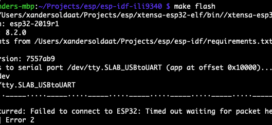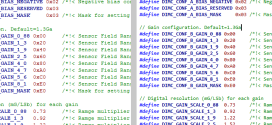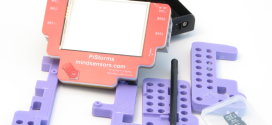
I’ve received a fresh batch of sensor covers in the mail so I can once again show you the gory details of various NXT sensor innards.
This time I took a knife to the HiTechnic Acceleration Sensor. I’ve been curious about this one for a little while now. From the pictures below it’s quite easy to see which one of the black shapes is the microcontroller (labeled U2) and which one does the actual sensing (labeled U1). As usual, I’ve blurred out the actual type numbers; if you’re that keen to copy the design to make your own, I’m sure you can afford to buy your own and rip it apart.
Click on the images to enlarge.
If there’s a specific HiTechnic sensor (or other sensor) you’d like to see taken apart that hasn’t been featured yet, let me know and I’ll see what I can do.
 Bot Bench I'd Rather Be Building Robots
Bot Bench I'd Rather Be Building Robots






It could prove useful to know where the actual acceleration chip is, so thanks! (EG: Minimising acceleration due to rotation.) On a related note, it might also be useful to know where the HiTechnic gyro sensor’s gyro chip is.
I am not at liberty to give you those details, but you’re more than welcome to send them an email to ask 🙂
I think he wants to know the placement, not the part numbers. Also, why DO you blur them out? If HT didn’t want us to know them, they would grind/sand the IC surfaces, at least I think so.
All I want to know is its location within the sensor, not the part number/ordering information. For instance, I would like to test what effects the radius from the center of rotation might have on the acceleration sensor, and knowing where it is gives me a more accurate data than using a random point on the sensor case.
In this case, I would want to rotate the sensor around the tip, since that is where the chip is, to eliminate the radius. The axis of rotation should experience 0g (since its not moving linearly, if I ignore gravity). If I were to center the axis of rotation around the center of the sensor, there would be a radius affecting linear acceleration due to the distance from the chip. It’s simple physics, and I tried to warn you about this with your omniwheel robot (“Things That Go Bump in the Hall”), but not only did you not seem to understand, but you were also unable to actually move the sensor in your design. (My apologies if I am wrong about the first statement, and I don’t blame you if I was right about the second. I probably couldn’t have followed my own advice on that without major rebuilding.)
In summary, I would appreciate it if you could point out the location of the gyroscopic chip relative to the case, or tell me how to take apart the cases on my Hitechnic/LEGO sensors, and whether or not I will be able to put them back together, and if so, how.
OK, sorry about the last post. Just read Matthew Richardson’s post, and I now have enough information. Anyway, I explained why I wanted to know its approximate location.
Go to http://mightor.wordpress.com/category/exposed/ to see all the “Exposed” sensors that Xander has taken apart. Or go to http://mightor.files.wordpress.com/2009/11/image5.png to see the picture of the Gyro (the sensor is labeled U1). However, I don’t think that the placement has anything to do with the readings of the gyro. I understand that it could with the Accel sensor, but I don’t believe that it would affect the Gyro.
I blur them out because HT asked me to, they’re also the ones that provide me with the sensor covers. As I said in my article, the actual sensor is labeled U1, which is at the front of the PCB, so the placement is at the front.
Oh, ok. Thanks for the pictures 🙂
Did you know there is a newer version of this sensor? It is dated 2009, instead of 2006. It’s (revision?) number is NAS2-10. The ICs are mounted on the other side of the PCB, but in about the same location.
Matthew, I do know there’s a newer one but it has no additional functionality that is exposed to the user.
Is this sensor similar to Mindsensor’s Multi-Sensitivity Acceleration Sensor?
http://www.mindsensors.com/index.php?module=pagemaster&PAGE_user_op=view_page&PAGE_id=101
Yes, it’s similar except that it has no ranges, only one fixed setting.